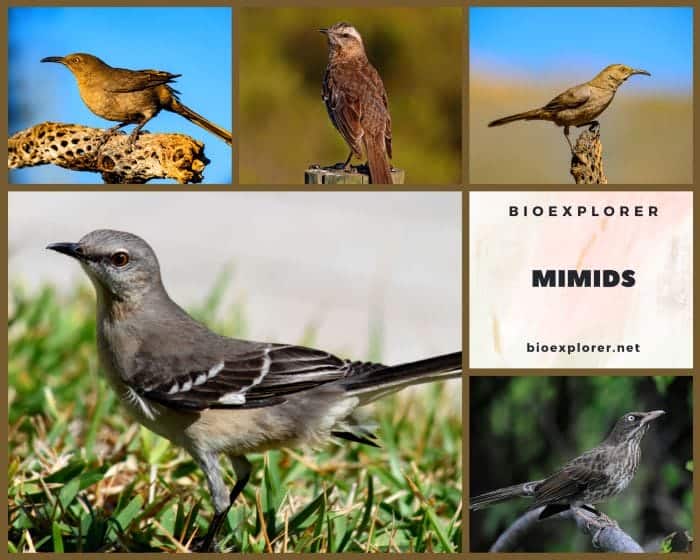
Mimids represent a fabulous family of exclusively New World songbirds brimming with vocal talents. As members of the taxonomic Mimidae family, over 30 species of mockingbirds, catbirds, thrashers, and tremblers reside across the Americas. These medium-sized passerines measure 8 to 13 inches long and weigh under 56 grams. They derive their group name from the Latin word for “mimic”, which refers to supple abilities mimicking sounds.
Many mimids showcase supremely versatile repertoires copying songs and calls of over 200 avian species intermixed with other animal imitations. Soloists like the Northern Mockingbird possess deft mastery, interweaving replicated elements into impressive improvisational displays. Read on to uncover more about these talented mimics!
Table of Contents
Families of Mimids
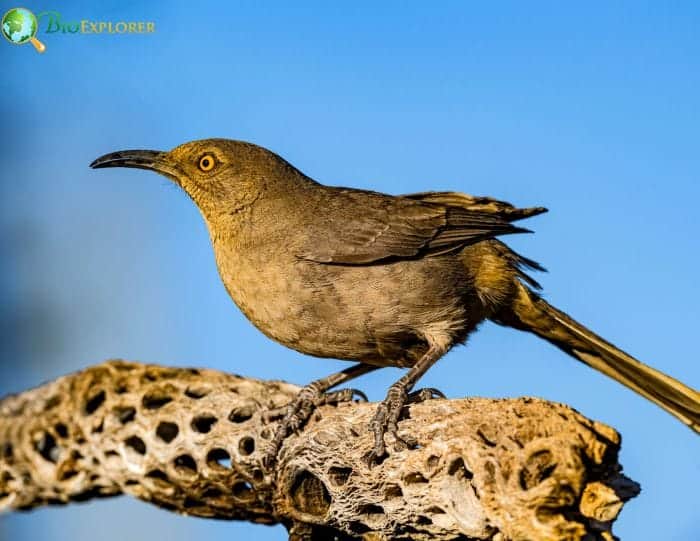
The New World Mimidae family encompasses over 30 species across multiple genera, including mockingbirds, catbirds, thrashers, tremblers, and other songbirds. This exclusively American family originated approximately 25 million years ago, likely starting in North America before migrating lineages expanded as far south as Argentina and Chile.
Taxonomy and Evolution
Mimids belong to the avian order Passeriformes. DNA analyses[1] have revealed their closest ancestral ties occur with Old World starlings (Sturnidae).
Research shows mockingbirds emerged early as one distinct evolutionary branch within the Mimidae itself, while catbirds, thrashers and tremblers later diversified into more basal groupings. Several extinct mimid species have been identified from fossils across the Caribbean islands and North America.
The largest genus within Mimidae is Mimus, comprising typical mockingbirds with 10 species like the widespread Northern Mockingbird. Other prominent mimid groups include:
Prominent Genera
- Mockingbirds: The genus Mimus includes around 10 species of true mockingbirds and is the most species-rich mimid genus. Famed vocal copycats like the Northern Mockingbird fall into this group. The genus Melanotis includes 2 species of blue mockingbirds.
- Catbirds: Catbirds comprise their genera (Dumetella and Melanoptila), with the familiar Gray Catbird being the predominant species found ubiquitously across eastern North America. These aptly named mimics often showcase feline-like mewing calls.
- Thrashers: Over 15 thrasher species across multiple genera (Toxostoma, Ramphociclus, Margarops, Allenia, and Oreoscoptes) inhabit dry, brushy areas across North and Central America. Curve-billed Thrashers and other Toxostoma specialize in flipping aside leaf litter, hunting for prey underneath using curved bills. These birds adeptly camouflaged in southwestern desert scrub.
- Tremblers (Cinclocerthia), secretive rainforest-dwelling birds like the aptly named brown trembler. This group contains 2 species.
Mimids in Puerto Rico
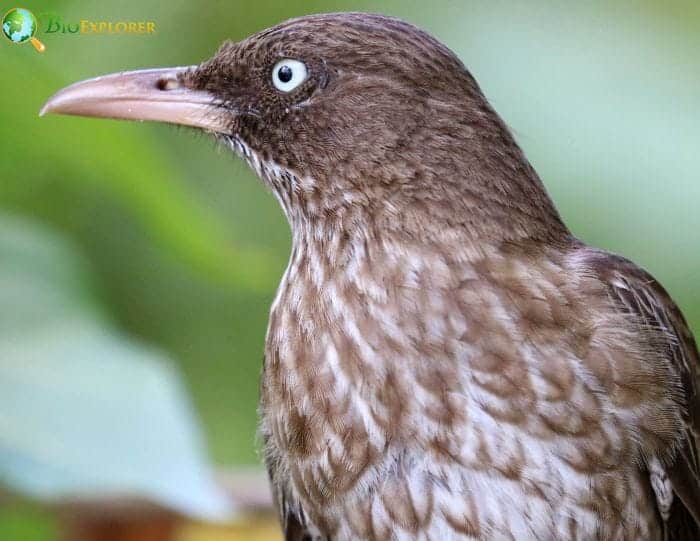
In Puerto Rico, the Mimidae family, known for its vocal birds like thrashers and mockingbirds, is represented by two species:
- Northern Mockingbird (Mimus polyglottos): This species is well-known for its wide range of vocalizations and adaptability to various environments.
- Pearly-eyed Thrasher (Margarops fuscatus): A common resident in Puerto Rico, found in diverse habitats including forests, urban areas, and gardens. It is currently not listed as endangered or under significant conservation threat.
These mimids are characterized by their varied vocal abilities and thrush-like appearance, typically having brown or gray plumage with some species sporting red, yellow, or white irises. Their ecological significance and the need for habitat preservation are crucial for maintaining Puerto Rico’s rich biodiversity.
Mimid Varieties and Habitats
Over 30 confirmed species, additional subspecies, and regional divergences showcase the wide diversity encompassed across Mimidae mockingbirds, catbirds, thrashers, tremblers, and kin. These passerines occupy an extensive range stretching from North, Central and South Americas.
Northern Mockingbird
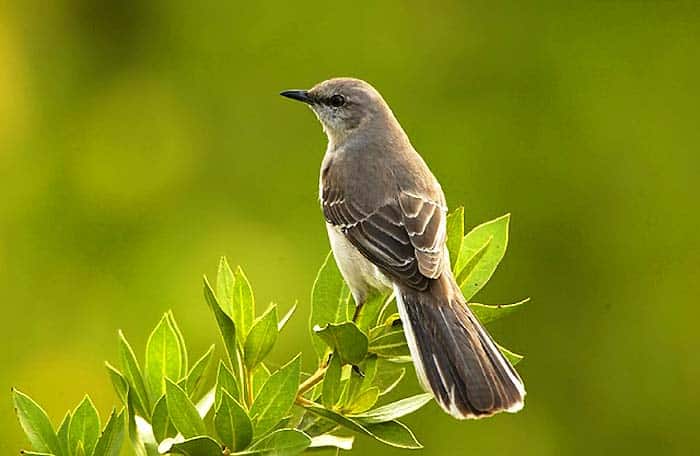
The Northern Mockingbird thrives across temperate North America from southern Canada through Mexico, inhabiting open country — farms, meadows, parks, suburbs, and anywhere interspersed with trees, shrubs, and brush. These ubiquitous gray songsters flourish near humans. Their vast mimicry repertoire incorporates sounds from over 200 species.
Gray Catbird
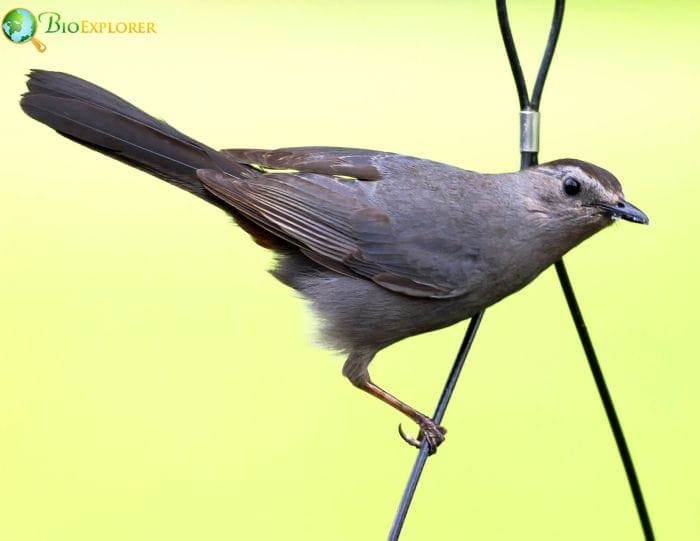
Gray Catbirds live predominantly in the eastern and central US plus adjoining southern Canada, favoring dense thickets from coastal areas to wet woodlands further inland. Their namesake cat-like vocalizations stand out from dawn till dusk. Expert mimics, catbirds weave borrowed chatters, trills, whistles, and songs from other birds into solos.
Brown Thrasher
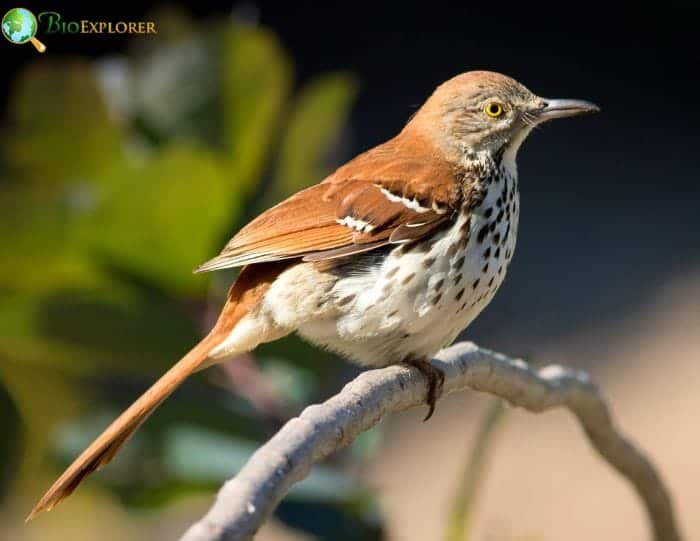
Brown Thrashers occur broadly across eastern and central US states and Canadian provinces. Thrashers remain secretive denizens of brushy woodland edges, hedgerows, and overgrown clearings, less adapted to human proximity than mockingbirds. Scrambling through leaf litter scanning for prey makes their habitat selection more specialized than mockingbird counterparts.
Tropical Mimids
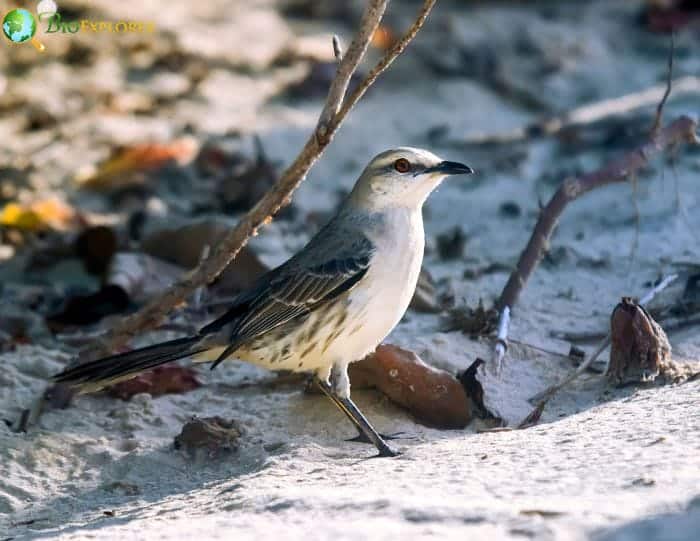
Myriad mimids like tremblers, some thrashers, and mockingbirds inhabit Central plus South America’s diverse ecosystems, from pine-oak forests to palm savannas, mangroves, and rainy Andean cloud forests. Most tropical species lack the extreme northerly reach of temperate mockingbirds, instead concentrating in Mesoamerican and South American countries[2].
Mimid Behavior and Traits
Mimids exhibit shared physical and behavioral attributes while demonstrating wonderful diversity across genera and species in their looks, characteristics, and quirks. Hallmarks binding them include vocalization talents, ground-foraging habits, and nesting commonalities.
Mimid Anatomy and Markings
Several anatomical mimic trademarks occur:
- Elongated tails often flicked upwards.
- Slender bills that may curve downwards.
- Strong legs and feet for terrestrial walking/hopping.
- Decorative plumage accents in black, white, and rufous.
Decorative flourishes manifest vividly for some, like the Northern Mockingbird’s flashy white wing patches conspicuous when flashing wings. Yet plain-clad species also classify as camouflaged by their thrasher-like plumage lacking flashy touches.
Mimid Foraging and Feeding
Versatile palates characterize mockingbirds dining on insects, fruits, seeds, and sometimes little vertebrates.
- Many thrust bills into the soil, probing for invertebrates like beetles and worms, scratch leaf litter aside, or wade in shallow water, snatching up aquatic insects and tiny fish.
- Certain species, like Curve-billed Thrashers employ specially adapted curved bill shapes to tear into rotting logs and flip aside debris, unearthing arthropod banquets underneath (insectivores).
Mimid Distinctive Features
- Long tails frequently cocked upwards in excitement.
- Slender bills that may be sickle-shaped with a slight curve.
- Strong legs and feet ideal for terrestrial hopping and scratching through dense tangled brush.
- Highly musical talents for song, mimicry and vocal imitation.
Mimid Decorative Plumage
- Many mimids exhibit striking black, white or rufous markings around their faces, wings and tails such as the gray plumage of mockingbirds accented with white wing patches and outer tail feathers.
- Faces may sport a bold black mask through the eyes or conspicuous white superciliums and eye-rings.
- Tails commonly showcase white outer retrices while flashing the tail’s bright white undertail coverts is a frequent behavioral display.
- Prominent white wing patches most noticeable in flight led to names like “white-winged mockingbird”.
Mimid Body Structure
Medium-sized songbirds measuring 8-13 inches, mimids generally weigh under 56 grams. Plumage patterns mimic true thrushes with dull brown, gray or black above and lighter underparts often marked with dark streaks or spots. They possess long tails and slender down-curved bills well-suited for probing leaf litter and soil.
- Overall mimids share largely thrush-like traits of being medium-bodied songbirds but they trend toward more elongated tail and bill proportions coupled with leaner, lighter bodies perched atop proportionally longer legs characteristic of agile ground foragers.
- They also have rounded, shortish wings indicating they are weaker fliers adapted for hopping and running.
- Within this broader anatomical framework prevails wonderful diversity in size, structure, and decorative plumage details across genera and species. But uniting them all are those fabulous musical and mimetic talents!
Mimid Vocalization
Mimids share superlative musical chops for vocal mimicry. Solo Northern Mockingbirds may mimic over 200 songs and calls sampled across avian neighbors, other wildlife, mechanical gadgets, and more.
Display complexity scales based on species with simpler singers, too, but most flaunt above-average repertoires relative to other songbirds. Musicality interweaves inherited talents nurtured via learned components.
Mimid Nesting
- Most mimids nest in dense bushes or scrubby trees, building bulky nests out of sticks and twigs lined inside with grasses, bark strips, feathers or hair.
- The typical clutch size is 3 to 5 eggs.
- Parents tenaciously defend nests from potential egg thieves. After 11-14 days of incubation, helpless nestlings emerge that fledge within 2 weeks.
Mating and Social Behavior
- Monogamy centered around the pair bond leads to more successful breeding outcomes for mimids.
- Many partners mate continuously across years, renewing seasonal pair ties through lively courtship chasing displays.
- In northern areas they raise dual broods from May to July while tropical and southern residents simply persist on territories year-round.
- Some species migrate in winter while others maintain stable home ranges.
Enjoying Mimids in Your Backyard
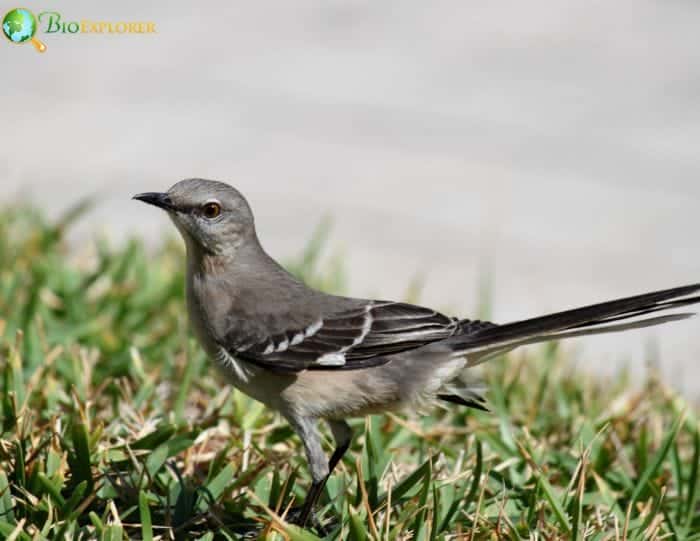
Attracting these talented songsters to your outdoor space rewards endless vocal entertainment plus support for conservation. Consider incorporating these tips for better backyard mimid visitation:
Feeding
Supplement natural diets using feeders:
- Live mealworms offer essential proteins for breeding birds.
- Try chopped fruits/berries like raisins, currants, apples, bananas.
- Serve sprouted seed blends high in nutritional variety.
- Present suet cakes for energy-dense boosts.
Also, let some garden crops like strawberries go wild for self-service snacking!
Water
Install a bird bath, fountain, or small wildlife pond to entice mimids seeking drinking and bathing opportunities. Moving water elements provide additional appeal. Position water near foliage for quick escape cover.
Landscaping
Plant native species mimicking wild tangled habitats. Excellent picks include berry bushes, fruiting trees, flowering vines, fragrant flowers, conifers, and native grasses. Avoid pruning too severely.
Leave leaf litter, brush piles, and unmowed meadow patches wild as shelter sites. Venture gardens also tempt ground foragers. Swift lawnmower blades prove lethal; however, do hand trim only where necessary if nests occur.
Nest Support
Bring breeding pairs in by offering natural fiber nest provisions during spring, like pet fur clippings collected in brush or mesh bags. Supplying nest boxes also aids if sited appropriately to preferred specs. Proper placement prevents invading house sparrows from stealing spots in boxes best tailored for special cavity requirements of certain mimids.
Research suggests fostering species enrichment through customized provisions paying attention to the distinct needs of mockingbirds, catbirds, thrashers, plus regional specialists. This promotes biodiverse abundance. Contact local experts for custom recommendations to assist rare species for your location.
Mimids in Culture and History
Beyond backyard entertainment as delightful songsters, mimids have left surprisingly extensive cultural imprints across global languages, legends, symbols, and arts, while some species face conservation uncertainties.
Folklore and Indigenous Connections

Mimids often featured prominently in mythologies of numerous Native American groups, especially mockingbirds among the Cherokee, as creative world-makers.
- Tribes like Hopi incorporated mimids into ritual costumes donned by their Kachina spirits during religious ceremonies. Intricate symbolism wove them into cultural tapestries through dances, songs, and shared oral stories[3].
- Even today, among modern indigenous activists globally, mimids remain active symbols deployed respectfully to represent interconnected environmental justice towards preserving Indigenous cultural heritage and land stewardship. Their universality as beloved songbirds aids solidarity transcending tribes and geography.
US State Symbols
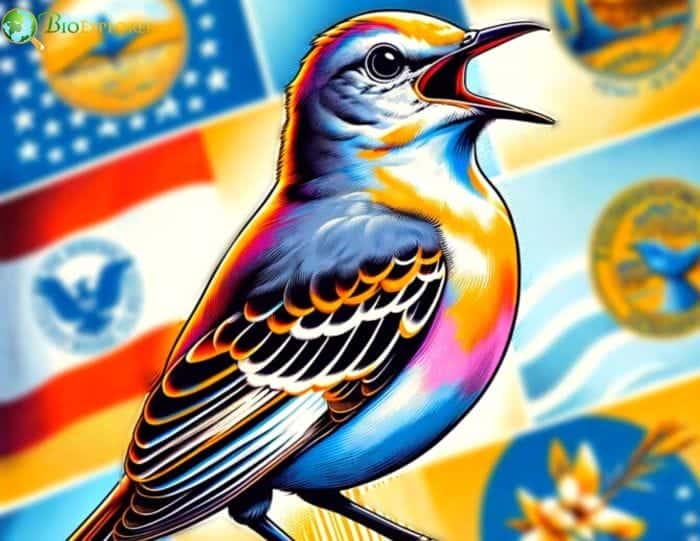
The Northern Mockingbird sings its official song as a state bird of Arkansas, Florida, Mississippi, Tennessee, and Texas. No other avian species claims designation as a state bird for so many US states, highlighting its immense cultural popularity among southeastern states where Northern Mockingbirds thrive as year-round residents.
US Popular Culture
- In US popular culture, the Northern Mockingbird holds a special place. Harper Lee’s iconic novel “To Kill a Mockingbird” uses it symbolically to represent innocence[4].
- Musically, the mockingbird inspired Carly Simon and James Taylor’s rendition of “Mockingbird“, a song originally by Inez and Charlie Foxx, which became a hit.
- Folk-blues artist Elizabeth Cotten, known for her unique guitar-picking style, indirectly reflects the rhythmic complexity akin to mimid vocalizations in her work.
- The Northern Mockingbird’s presence in these artistic mediums underscores its cultural significance beyond its natural habitat.
Mimids Conservation Concerns
Once dangerously scarce, Pearly-eyed Thrashers in Puerto Rico rebounded thanks to concentrated recovery efforts on their last refuge. However, most mimids, like the ubiquitous Northern Mockingbird, maintain lower threat levels. Habitat loss and cats injure/kill the most. Beyond ethical outdoor cat containment, everyone can aid conservation by making landscape changes that support local ground-nesters.
Conclusion
Mimids deserve their titles as North and South America’s fabulous songster royalty, evident across over 30 species of mockingbirds, catbirds, thrashers, and allies. As talented mimics, these passerines copy vocal elements spanning over 200 diverse avian and other wildlife songs/calls, plus mechanical sounds per iconic species like the Northern Mockingbird. Even their monikers pay homage, being named “mimic thrushes” referencing vocalization prowess.
Yet mockingbirds and kin contribute far beyond entertainment value as prolific backyard guests. Conservation concerns for threatened endemic species like the San Cristóbal Mockingbird highlight the urgency behind broader habitat stewardship supporting localized decliners.
From indigenous cultures interweaving their symbolism through modern admiration by great writers, their ubiquity shines in continental recognition as esteemed state birds. At the same time, new research continues to reveal astonishing intelligence abilities!
![]()











